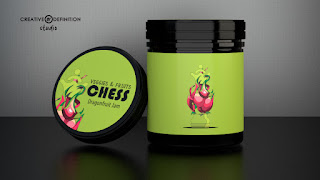The Rook Radish
The rook is a piece in the game of chess resembling a castle tower. Each player starts the game with two rooks, one on each of the corner squares on their own side of the board.
In general, rooks are stronger than bishops or knights. Two rooks are generally considered to be worth slightly more than a queen. Rooks and queens are called heavy pieces or major pieces, as opposed to bishops and knights, the minor pieces.
Being an important piece in chess, the rook made us think of roots, of offering stability. So our new illustration for the rook is inspired by a vegetable that has a strong root and a spicy taste: the radish.
Did you know? Radishes can be categorized into four main types such as red, pink, white, gray-black, or yellow radishes, with round or elongated roots.
It most likely originated in the area between the Mediterranean and the Caspian Sea. It may come from the wild radish in southwest China. It is possible that radishes were domesticated in both Asia and Europe.
Radishes are usually eaten raw — dipped in good butter and flaky salt, or sliced thin onto salads — these vegetables can also be cooked like most other root vegetables.
Chock full of vitamin A, C, E, B6, potassium, and other minerals, radishes can give your whole body an immunity boost.
See more of our design work
In general, rooks are stronger than bishops or knights. Two rooks are generally considered to be worth slightly more than a queen. Rooks and queens are called heavy pieces or major pieces, as opposed to bishops and knights, the minor pieces.
Being an important piece in chess, the rook made us think of roots, of offering stability. So our new illustration for the rook is inspired by a vegetable that has a strong root and a spicy taste: the radish.
Did you know? Radishes can be categorized into four main types such as red, pink, white, gray-black, or yellow radishes, with round or elongated roots.
It most likely originated in the area between the Mediterranean and the Caspian Sea. It may come from the wild radish in southwest China. It is possible that radishes were domesticated in both Asia and Europe.
Radishes are usually eaten raw — dipped in good butter and flaky salt, or sliced thin onto salads — these vegetables can also be cooked like most other root vegetables.
Chock full of vitamin A, C, E, B6, potassium, and other minerals, radishes can give your whole body an immunity boost.
See more of our design work




Comments
Post a Comment